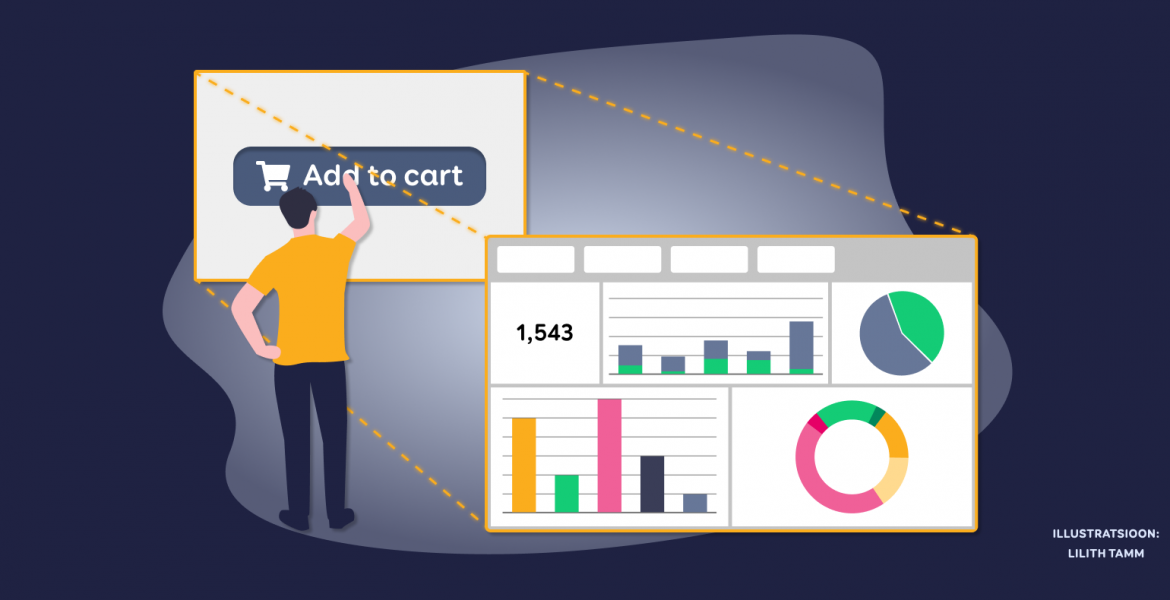Web statistics from the POV of a marketing specialist and a UX specialist
In our everyday work, we come into a lot of contact with Google Analytics and Tag Manager settings, which are not always great for analysing how the consumer is interacting with a website’s content. Why is that?
Web statistics are used by different divisions within companies. Dependent on their tasks and goals, their requirements for measurements may vary wildly. In this article, we will use Google Analytics as an example to talk about the measurements that two different interested parties – a marketing specialist and a UX specialist – need for their work.
The needs of the marketing specialist
Marketing is interested in everything relating to the user first landing on the website, the actions they take while on there, and how they leave it:
- who landed on the page
- when they arrived
- what did they come to look at/to find
- what caused them to leave the website
- did they do anything before leaving – order or purchase something, ask for information, send their contacts etc.
- how did they find the website – through a campaign, via search, a recommendation etc.
Marketing will divide this information up into target groups based on gender, age, nationality, education, and other demographic indicators. To target people even better, marketing will often delve really deep into this data to research, for example, the geographical data of a visitor (which country and city were they from) or to find out which language they browsed the website in. Marketing can also look at what other content the visitor interacted with.
The needs of the UX specialist
Unlike marketing, the UX specialist is interested in everything that the visitor does on every page and the order they do it in:
- the order in which they moved between the pages AKA where they started and where they finished
- which buttons or areas they clicked on; did they also click somewhere they shouldn’t have
- how long they scrolled down the page for or did they scroll down at all
- how the user finished their session – did they leave without finding what they were looking for or did they pick up where they last left off
Sometimes, in rarer cases, when services or actions are targeted and split up according markets or target groups, the UX specialist may also be interested in gathering more detailed data about the website’s visitors, e.g. gender, age, geographic indicators etc.
The UX specialist is interested in every click the user makes, whether it has context or not. Their job is to understand if the design offers good usability for the users.
Both the marketing and the UX specialist are also interested in search-related data – everything the searches for on the website. The UX specialist wants to understand if the results shown to the user in response to the keyword(s) they used are correct and make sense. Meanwhile, the marketing specialist is interested in the actual keyword(s) used.

Google Analytics and the opportunities it provides
Google Analytics is one of the most popular freeware web statistics systems. By default, it only provides page views, which makes it very difficult for UX specialists to gather the data they need for their work.
UX specialists need to additionally make use of the widely customisable Tag Manager, which can be set up to keep track of various events across the website, such as mouse clicks, data entry in forms, error message occurrences, scrolling, file downloads, purchases, sign-ups etc.
For marketing people, Google Analytics alone is generally enough to meet their needs and, if necessary, they have the option of setting up even more detailed configurations for it based on their goals.
We hope that this article offered you some ideas on how you could set your web statistics tools up in such a way that they would benefit you even more.







